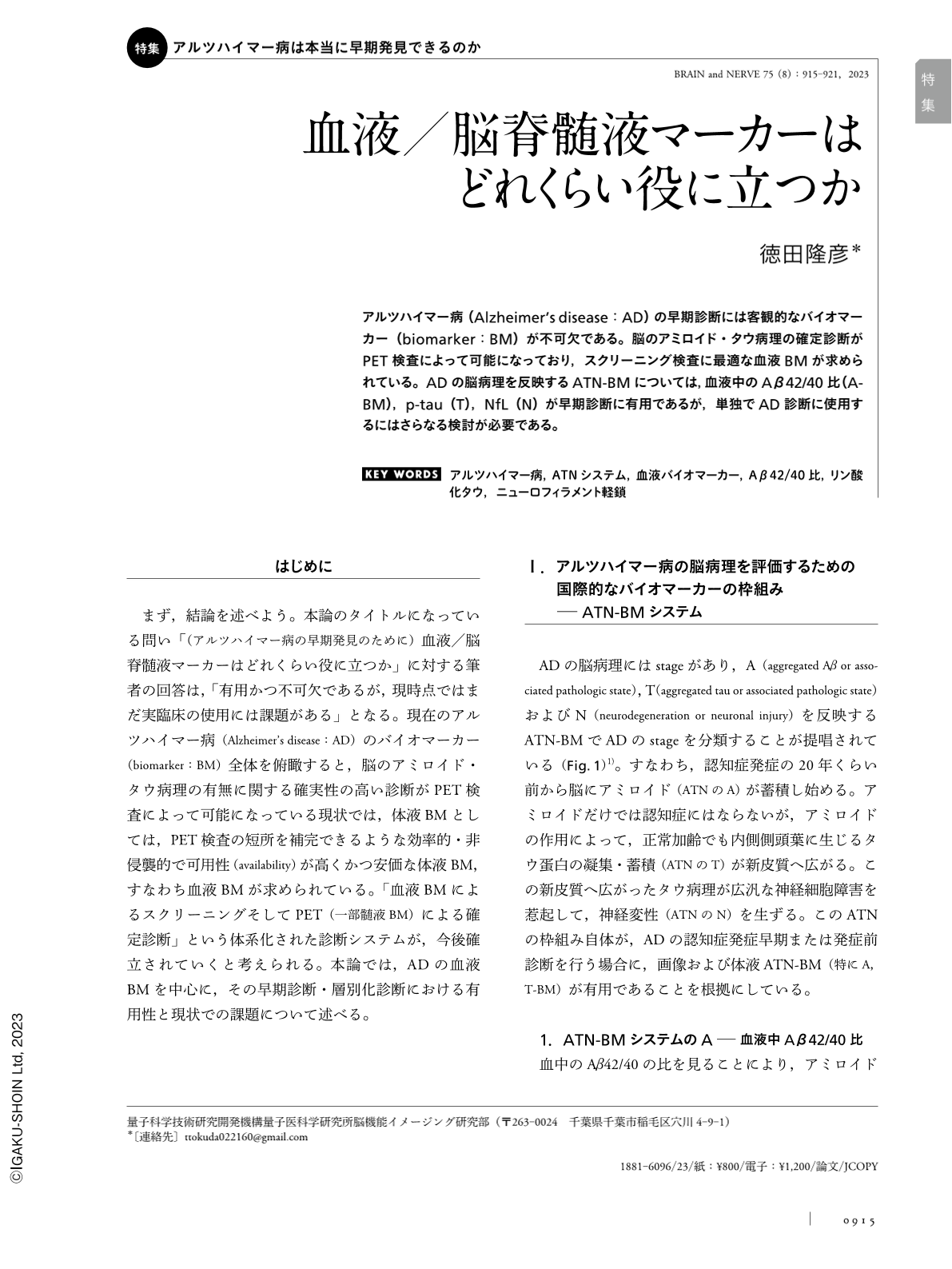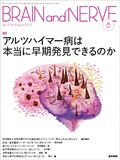Japanese
English
- 有料閲覧
- Abstract 文献概要
- 1ページ目 Look Inside
- 参考文献 Reference
アルツハイマー病(Alzheimer's disease:AD)の早期診断には客観的なバイオマーカー(biomarker:BM)が不可欠である。脳のアミロイド・タウ病理の確定診断がPET検査によって可能になっており,スクリーニング検査に最適な血液BMが求められている。ADの脳病理を反映するATN-BMについては,血液中のAβ42/40比(A-BM),p-tau(T),NfL(N)が早期診断に有用であるが,単独でAD診断に使用するにはさらなる検討が必要である。
Abstract
Early diagnosis of Alzheimer's disease (AD) relies on imaging and fluid biomarkers to objectively detect and quantitatively evaluate brain AD pathologies. Amyloid- and tau-PET scans recently enabled clinicians to make definitive diagnoses based on abnormal amyloid/tau deposition in the human brain. Since PET scans and blood-based biomarkers are mutually complementary, the identification of suitable blood-based biomarkers is essential for screening brain AD pathologies. According to the National Institute on Aging and Alzheimer's Association (NIA-AA) Research Framework published in 2018, AD is defined by its underlying pathologic processes, which can be diagnosed in vivo using suitable biomarkers. These biomarkers are categorized under the ATN classification system, including β amyloid deposition (A), pathologic tau (T), and neurodegeneration (N). Originally, all the ATN fluid biomarkers were assessed using cerebrospinal fluid, but currently these biomarkers can be quantified using blood samples. Among those blood-based ATN biomarkers, the plasma levels of Aβ42/40 ratio, p-tau, and neurofilament light chain (NfL) representing “A,” “T,” and “N” biomarkers, respectively, are useful in the early diagnosis of AD. However, further studies and additional data are required before utilizing these blood-based biomarkers as stand-alone diagnostic markers for AD.

Copyright © 2023, Igaku-Shoin Ltd. All rights reserved.


